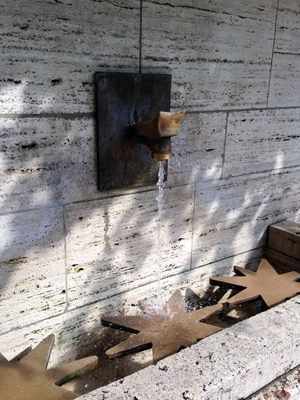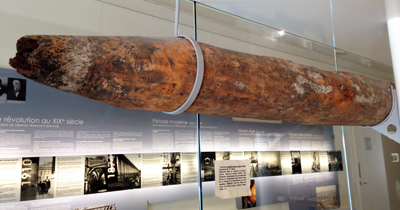A series on Water in Paris
Part 2: Drinking water
The Seine furnishes half of the drinking water to Paris and the region. Other water comes from aquifers and aqueducts.
One of the aqueducts, the aqueduct de l’Avre, brings water, using just the force of gravity, to Paris from the Avre river in Normandy 102 kilometers away. The chief engineer for the project was Fulgence Bienvenüe who was also the creator of the Paris metro. The aqueduct entered into service in 1893. The aqueduct flows mostly underground before crossing the Seine on a bridge designed by Gustave Eiffel between Saint Cloud and the Bois de Boulogne. The bridge is a footbridge and an interesting destination for an outing. See our article.
There has been indoor running water in Paris since 1781, albiet there were only 125 houses connected at that point. The great strides in indoor water came under Baron Haussmann in the mid 19th century and by 1884 two-thirds of Paris was connected. There are multiple water treatment plants just upstream from Paris. These plants treat 1.83 million cubic meters of water per day which is then distributed to the consumer via 15,000 kilometers of piping, reservoirs and water towers. Parisians use one and a half times the volume of the Montparnasse tower each day. Used water is recollected, retreated and sent back into the Seine downstream.
Tap water in Paris (and in all of France) is the most carefully controlled food stuff of all. Water is tested at all stages of distribution including through trap doors in the sidewalks all over the city. Paris water has a good balance of calcium, magnesium and other minerals, making it an excellent mineral water for all ages. And how about the price, just 1.60€ per YEAR for drinking water (assuming you drink 1.5 liters per day). As a comparison tap water is 300 times less expensive than your average bottled water. Plus is delivered directly to your home and you don’t have to think about what to do with the empty bottles (10kg per year per person).
If you don’t like the chlorinated taste of tap water let it rest in the fridge for 15 minutes or 30 minutes on the counter before drinking it and the chlorine will evaporate.
When out and about in Paris visit one of the 1200 water fountains for a fill up. There is an interactive map available for your phone. There are even 6 fountains that offer a cool sparkling water. We visited the one in Parc André Citroen and found the water to be very refreshing, the bubbles not too big and just the right temperature. What a treat!
Another stop we made while out visiting was Square Lamartine in the 16th arrondissement where there is one of 3 Parisian fountains that are in fact artesian wells. The attractive travertine marble fountain has water that flows directly from the Albien aquifer 600 meters below the surface. The water is captive between two hard layers of rock and thus has natural pressure when sent through a pipe to the surface. The water is naturally high in iron and flourine thus is an excellent mineral water sought out by people in the neighborhood who come to fill bottles for consumption at home. There are 2 other Albien fountains in Paris in the 13th and 18th arrondissements. Other picturesque drinking water fountains are the Fontaines Wallace. Sir Richard Wallace, an English aristocrat who loved Paris was the creator of these fountains that bear his name. During the siege of Paris in 1870 there was a water shortage and Sir Wallace did his part by creating this public drinking fountain. There are more than 100 of these cast iron structures that offer the same water that you get from your tap in your apartment, so they too are an excellent place to fill your bottle.
To find out more about the history of water in Paris as well as the importance of water to humanity visit the information centre and exhibits at the Pavillion de l’eau. Housed in a historical building in the 16th, the pavilion is a free museum created by the city of Paris and the water utility Eau de Paris to educate people – including kids – about water.
This article is the second in a series on Water in Paris. Revisit this site for future installments.
-
- Part 1: La Seine
- Part 2: Drinking water
- Part 3: Non-Drinking water
- Part 4: Crossing the Seine
- Part 5: Paris Canals
- Part 6: Tidbits
- Part 7 : Speak Easy, idomatic expressions using water
- Part 8: Paris flood 2016




